
views
- Get out of your home safely using a back door, window, or a fire escape ladder. If that’s not possible, hide in a safe room and lock the door.
- Turn out the lights, be as quiet as possible, and call emergency services. Do not leave your room until the police arrive.
- If you come face-to-face with an intruder, stay calm and cooperate with them. It's legal to shoot an intruder in most states, but use deadly force with extreme caution.
Hiding From an Intruder

Verify that the intruder is in your home. Be quick about checking and listen carefully. Do you hear noises that are out of the ordinary, like creaking stairs, opening drawers, or whispering? Is there a strange vehicle parked in your driveway? Once you confirm that someone is inside, stay calm so you can decide on the next steps. Do not open your door or confront the intruder because they could react violently. Text your roommates or family members to see if they might be making the noises. If possible, check your home security cameras on your phone to see if anyone’s inside.
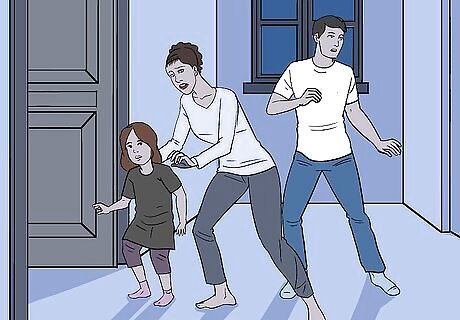
See if you can get out of your home safely. If the intruder is still outside or far away from you, try to escape through a back door, window, or the fire escape ladder. That way, you’ll put greater distance between you and the intruder, reducing the chances of an altercation or serious danger. Once you’re out of your home, hide in your car and call the police. If you’re living with other people, text them that there’s an intruder. Tell them to either lock their door, sneak outside, or get to a designated safe room in your home.
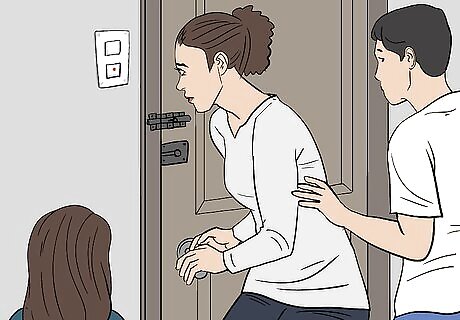
Hide in your safe room and lock the door. If you’re not able to escape, the best thing to do is to get to a safe place inside your home. Designate a safe room that you can hide in during an emergency, and make sure the room has a solid door that locks from the inside. If you like, barricade the door with heavy objects or furniture so the intruder cannot enter. Install a deadbolt lock on your bedroom door or safe room for extra protection. If you can’t make it to your designated safe room, stay put, lock the door, and remain silent. Stock your safe room in advance with food, water, first aid supplies, and a weapon (a bat, hammer, etc.). Make sure you have a charged cell phone that you can use to call the police.

Turn out the lights and stay silent. To avoid alerting the intruder of your presence, put your phone on silent mode, and ensure all the lights in your room are turned off. Avoid fidgeting, moving around the room, or opening interior doors.

Call emergency services and follow their instructions. Once you’re in a safe place with the lights turned off, call 911 or emergency services for help. Provide the dispatcher with as much information as possible, and keep the line open so they can listen in, provide you with updates on the progress of the police, and help you stay calm. Prepare to answer questions about the nature of your emergency, your address, your name and phone number, who else is in the home with you, where you and other people are located in the home, and the description of the intruder. For example, you might say, “My name is Sally Smith, and I live at 123 River Road. I hear an intruder in my home. I'm hiding in the upstairs bathroom, but I think they’re still downstairs in the living room.”

Avoid talking to the intruder, unless they try to break into your room. Threatening the intruder or telling them that you’ve called the police can give away your hiding spot, so remain as quiet as possible until police arrive. If the intruder tries to break into the room, however, go ahead and yell, “We've called the police, and they're on their way!” Use the plural “we” when you call out, even if you're alone. If the intruder thinks that there are more than one of you, they may panic and leave.
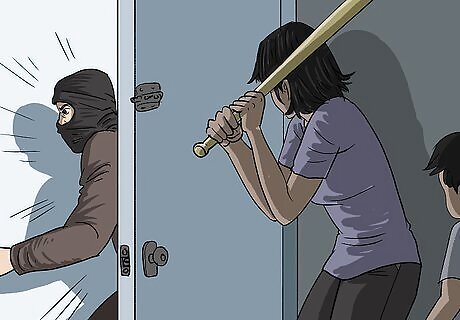
Choose your position in your safe room strategically. If the intruder tries to break into the room where you are hiding, stand in a corner that is on the opposite side of the door, and have your family members stand behind you. That way, you’ll be able to see the intruder before they see you, and see if you need to fight them (or shoot, if you’re armed with a gun).
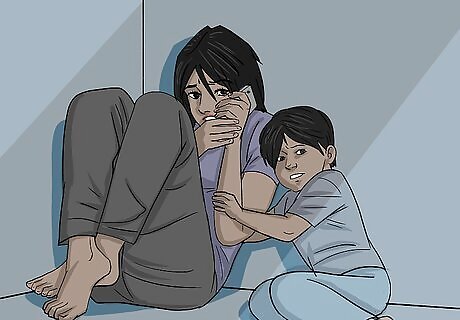
Remain in your safe room until the police arrive. Even if you’re sure that the intruder is gone, stay put until the police arrive to secure your home. Continue to stay on the line with the emergency services dispatcher until they inform you that the police have arrived and the police officially announce themselves outside your door. Make sure that the police check your entire house, especially if the intruder is still on the loose. Ask them to thoroughly check your property and any areas that seem vulnerable.

Consider staying with a friend or neighbor for the rest of the evening. Even if the police assure you that your house is safe, it’s completely normal to feel stressed, paranoid, or traumatized after a burglary. Call a trusted friend, family member, or neighbor to see if you can stay with them until the morning. It's also a good idea to try to determine how the intruder got into your home: Was a lock picked or a window broken? You may need to have repairs completed and/or locks changed before you'll feel safe sleeping in your home again.
Handling an Intruder When You Can't Hide

Trigger your security system or panic alarm button. Activating your home security system may scare off the intruder and prompt them to leave the premises. Some home security companies will automatically call you if an intruder breaks in, so be prepared to answer the phone. If the intruder forces you to disarm your security system, use your duress code instead of your usual code. This will silently notify the police that you’re in danger. If the intruder is inside your room and wants you to accept a call from your home security provider (they might know that if you don’t pick up, the police will arrive), answer with your prearranged distress code. For instance, you might say, “Mom, I’ll you in the morning” to indicate that you’re in trouble. If you don’t have a security system that notifies the police, call 911 as soon as possible. That way, if you’re confronted by the intruder, you can say that the police are on their way and possibly scare them away.
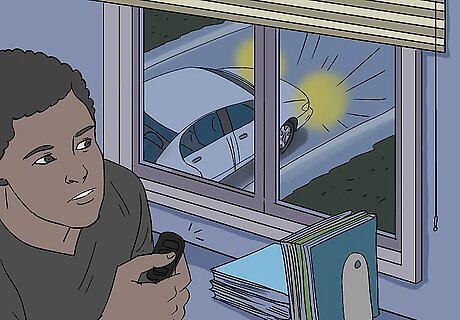
Set off your car alarm. If the intruder is outside of your room and you have access to your keys, press the alarm button to activate your car alarm. The loud noise may startle them and cause them to take off.

Keep your distance and stay calm. If the intruder makes it into your room, cooperate with them and avoid making sudden movements. Put your hands up at shoulder level so you look submissive, and try to position yourself so there’s furniture between you and the intruder. If you need to reach into your pocket to grab something, tell the intruder beforehand. You may eventually be forced to defend yourself, but you'll have a greater chance of surviving if you do what you're asked. In the meantime, look for ways to escape, and do your best to remain calm and cooperative—avoid confrontation, and do not react violently! EXPERT TIP Adrian Tandez Adrian Tandez Self Defense Trainer Adrian Tandez is the founder and head instructor of the Tandez Academy, a world-renowned self-defense training center in Mountain View, California. Trained under the renowned martial artist Dan Inosanto, Adrian is a certified instructor in Bruce Lee's Jeet Kune Do, Filipino Martial Arts, and Silat, among other things. Adrian has over 27 years of self defense training experience. Adrian Tandez Adrian Tandez Self Defense Trainer Keep in mind that the intruder may be armed, even if you don't see a weapon. Be very careful around an intruder. To be on the safe side, just assume that they're armed. You might think the intruder is empty-handed, but when they get angry, they could pull out a gun or a knife, so just stay aware.
Defending Yourself

Use pepper spray if you can escape the room. Before spraying the intruder, make sure there’s a clear path that you can use to exit the room immediately after. Contact with pepper spray can lead to coughing, choking, nausea, and even temporary blindness, so you want to ensure that you’re not trapped in the same space.
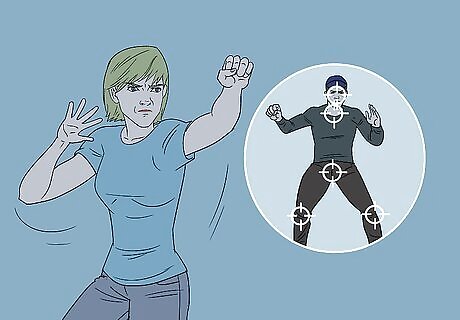
Incapacitate the intruder, if necessary. While it's recommended that you try to escape or cooperate with the intruder, you may be forced to defend yourself. Aim for the intruder’s groin, neck, face (eyes, nose, mouth), or knees, and pay attention to their position. If they’re not standing beside you, for example, kicking them in the knees is more effective than moving in closer to strike them in the neck. Inflict damage with your hands. Hold your dominant hand open and flat, with your fingers straight and close together, and your thumb out. Then, forcefully jab your hand into the intruder's neck. Alternatively, jab your elbow into the intruder’s neck, face, groin, or stomach, and throw all your body weight into it.

Use common objects as weapons. While you can attempt to gouge your attacker's eyes or nose with your hands, scan the room quickly to see if you can use something else as a weapon. A pen, bat, frying pan, or car keys can inflict serious damage, giving you enough time to escape.

Run out of your home as soon as you can. While you may be forced into a physical confrontation with the intruder, take the first opportunity to flee. Make as much noise as possible to alert a neighbor or a passerby to your situation.
Can you use deadly force to protect yourself from an intruder?
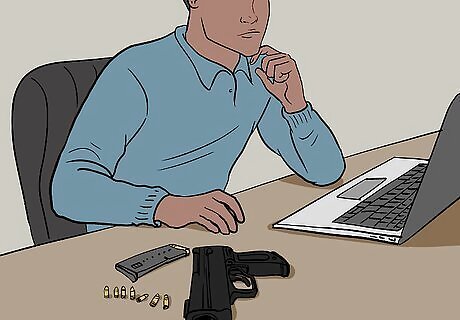
It depends on your state’s laws and the circumstances of the break-in. In most states, you can shoot someone and claim self-defense if: you’re not the aggressor, use the minimum amount of force to combat the threat, have a reasonable belief that such force is necessary and that there is an immediate threat, and are unable to retreat. However, some states have enacted laws that make a few exceptions: “Stand Your Ground:” Under this law, you don’t have to retreat (or attempt to retreat). You’re legally permitted to respond with force, but you may still need a reasonable belief that shooting is necessary. Castle Doctrine: Removes the duty to retreat because there’s a presumption that using deadly force was necessary. You can shoot anyone who unlawfully enters your home, without having to determine whether and how much of a threat they pose to you. Currently, there’s no duty to retreat in at least 28 states and Puerto Rico, but check your local self-defense laws for more information.
How to Defend Yourself Using Deadly Force

Identify that there is an intruder before shooting. In order to avoid tragic accidents, it's important that you try to keep a cool head when you think there’s an intruder in your home. Identify the person before shooting blindly, and account for your spouse, partner, and/or other family members. Take a quick moment before shooting if someone breaks into your room. It could be an intruder, in which case it's important that you protect yourself, but you don't want to accidentally shoot a police officer.

Shoot if you believe you or a family member are in danger. Even though you’re likely to be protected by the law for shooting an intruder, most states require reasonable belief that you’re in danger, as well as proportionate use of force. This means that if the intruder doesn’t have a gun, you could face charges for shooting them.

Secure your gun in a safe place, and use a gun lock. If you feel more secure with guns in your home, make sure that they are securely stored and locked away in a gun safe—especially if you have children or teenagers. To be safe, consider purchasing a gun lock that will make your gun inoperable when not in use.
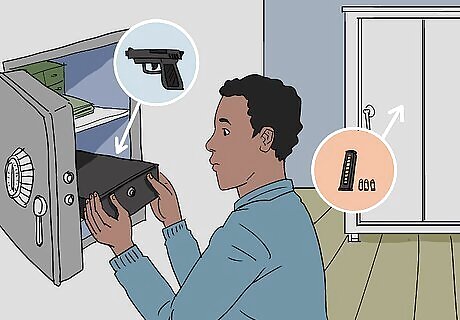
Store your guns and ammunition separately. It's generally recommended that you keep the guns in your home unloaded and that you store your guns and ammunition separately. Make sure you’re able to access both quickly in an emergency, and store them in your safe room (and hide the keys) so your children cannot access them.














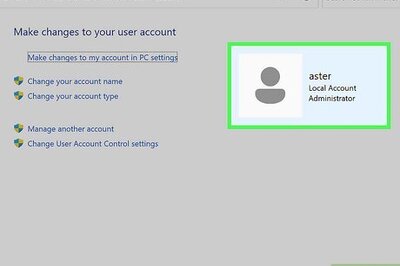

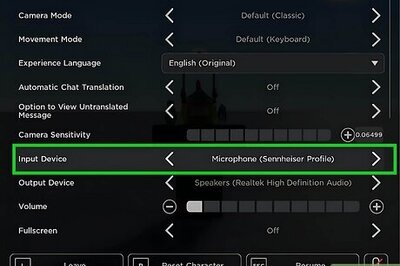


Comments
0 comment